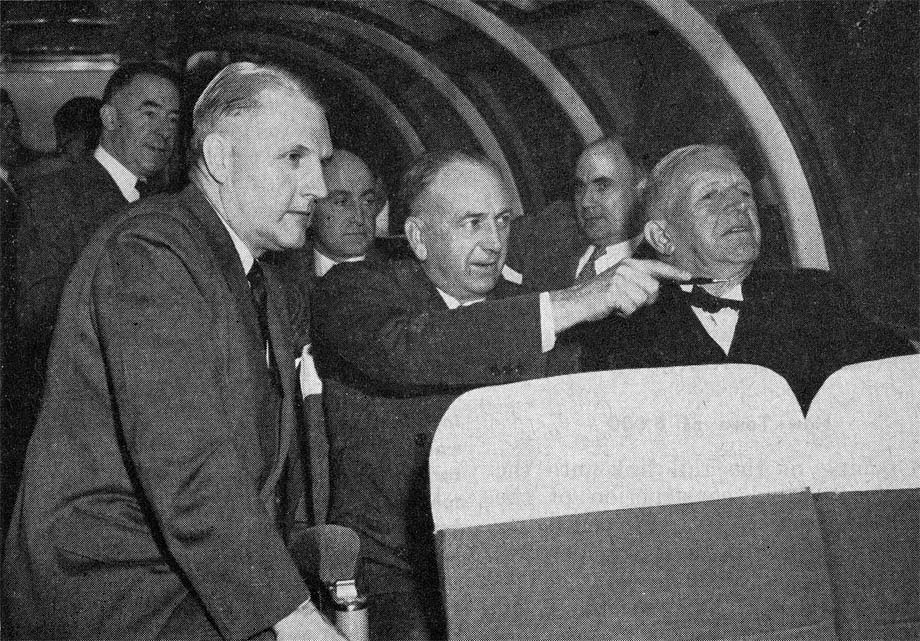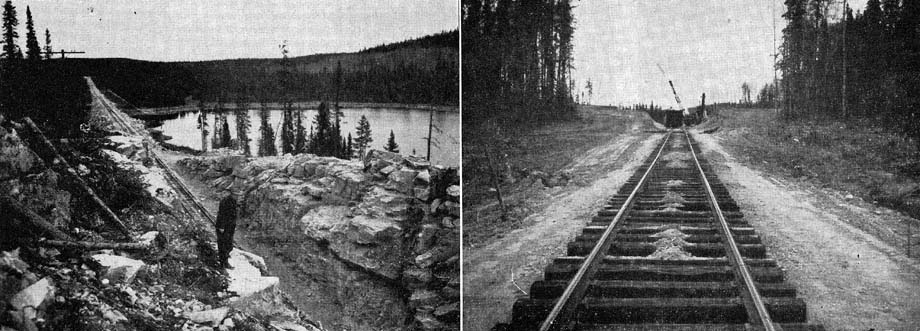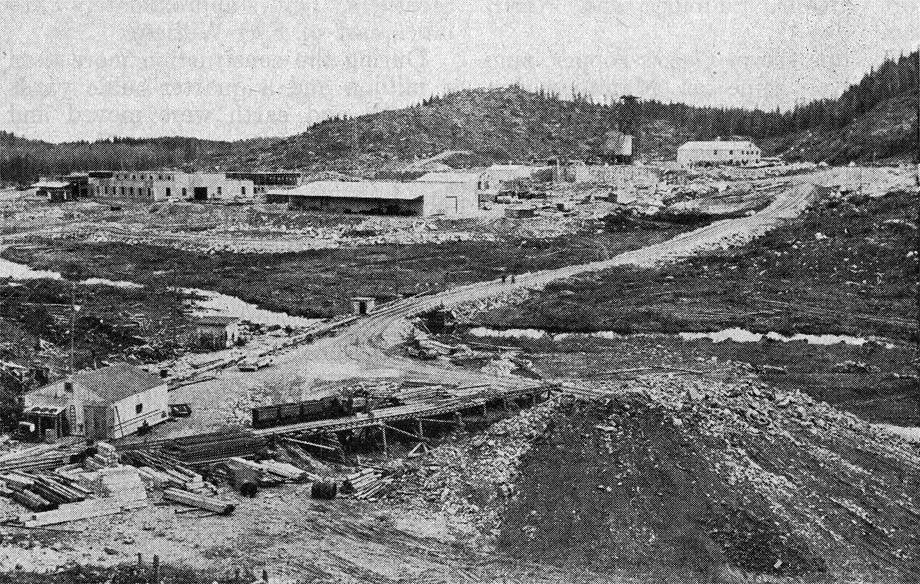

Company Builds New Line Into Rich Mining Area
N.R. Crump, President of the Canadian Pacific Railway, accompanied by members of the Ontario cabinet,
Hon. J.N. Allan, Hon. P.T. Kelly, and Hon. William Nickle, officially opened the railway's new 40 mile
$3,300,000 rail line into the northern Ontario mining development at Manitouwadge.
On The Map
The mining town of Manitouwadge, scene of Canada's greatest copper find really went on the map recently, with the arrival of the official party to open the line. The mining townsite which lies midway between the two transcontinental rail lines north of Lake Superior in the Ontario Northwest, just two short years ago was a wild expanse of trees and rocks and a tent or two. Today at the same spot, one of the nation's most modern, best planned housing and business developments, is rising from the rough forest.
The ceremonies were attended by more than 80 mining, industrial, government, and railway officials from Toronto, Montreal, Fort William, Port Arthur, Sudbury, and North Bay.
The line serves Geco's copper, zinc, and silver mine at Manitouwadge and the newly built townsite five miles south of the mine. Construction was started in September, 1954.
Joins Main Line
The branch line joins the railway's main trans-continental track at Struthers, Ontario, approximately 215
miles east of Fort William.

During the construction more than a million and a quarter cubic yards of rock and earth were moved and
five separate contractors worked on the job at one time. Two river crossings were made by the line and numerous
engineering difficulties were encountered, one of which required the building of a 50 foot high embankment to
cross a third of a mile of muskeg which is prevalent in the area. Rail laying was carried out by the railway at
the rate of more than a mile a day with a new improved method which allowed mechanized track laying equipment
to operate over newly laid rail held together by special portable bars. Actually the 39.8 miles of rail were
laid in 38 days. Ballasting of the line is being carried out but due to severe winter conditions in the region,
will not be completed until 1956. Telegraph and telephone circuits to serve Manitouwadge were laid this summer
by the railway's communications department.
New Town of 6,000
Openirg of the rail link into the area will speed construction of the new community of Manitouwadge, which is going up in the wilderness. The town is planned to house 6,000 persons and will have all the usual facilities of isolated outposts in northern Canada. So far about thirty homes have been completed
The town will have a hospital, bank, movie house, and playgrounds. Spread over 300 acres, the site is
divided into an industrial area, commercial area, and four residential areas.

 Railway Limited and is reprinted here with their permission. All photographs, logos, and
trademarks are the property of the Canadian Pacific Railway Company.
Railway Limited and is reprinted here with their permission. All photographs, logos, and
trademarks are the property of the Canadian Pacific Railway Company.
